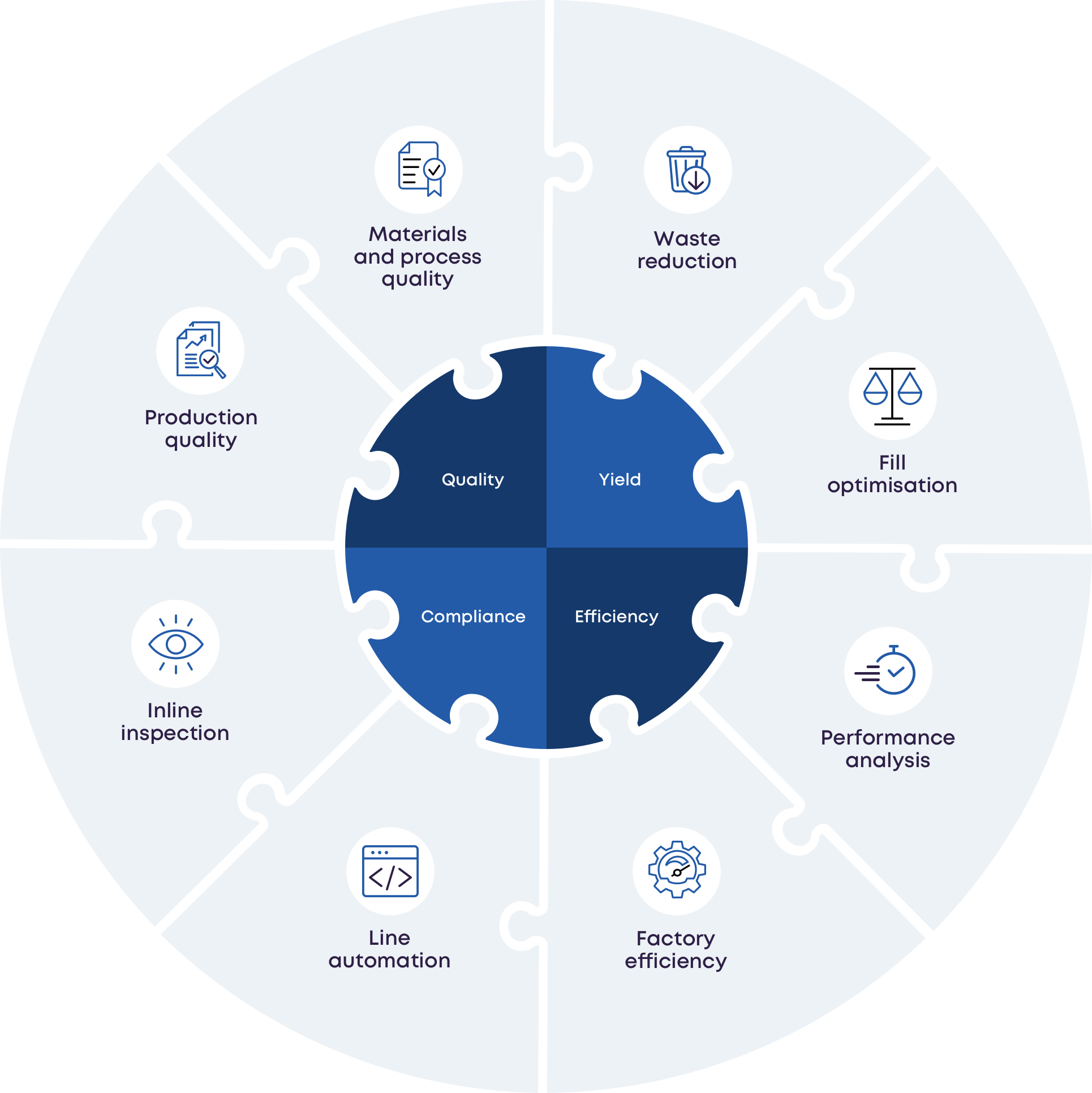Editorials
The Value of LIMS in Manufacturing
Read how LIMS can aid Production Effectiveness
It’s frustrating to witness the frequent recalls of products in recent years, causing significant wastage, all testimony to the need for paramount control of food safety and quality. One example was the recall of four cheese products due to potential contamination with E. Coli bacteria. Tragically, one person in Scotland died from the infection, whilst 11 others were hospitalised.
Ensuring food safety and quality is crucial in the food and drink manufacturing industry. Most factories already carry out laboratory testing to assess the quality of materials, checking for compliance with specified tolerances and ensuring they are free from contamination.

Despite these precautions, a significant challenge can arise in bridging the gap between laboratory tests and the busy factory floor. This gap manifests in issues such as isolation, rejects, rework and costly product recalls, the inability to track raw materials, human errors, lost documentation, delayed data and downtime. The breakdown in communication poses a considerable risk to both the efficiency of the manufacturing process and, more critically, to consumer safety.
A Brewery’s Struggle
We visited a brewery and observed that they were encountering significant wastage and product recalls. The factory would extract multiple samples from various vessels and stages such as malting, mashing, boiling, fermenting and filtering. These samples were then taken to the laboratory for tests on factors including alcohol percentage, pH, colour analysis and clarity to ensure material quality and safety.

Everything seemed well-controlled until the gap between the laboratory and the factory floor became apparent. When the sample results were released from the laboratory, it was discovered that the sugar concentrations in the wort was too high, resulting in an alcohol percentage exceeding the tolerance limit. Unfortunately, the laboratory department couldn’t promptly communicate the failed samples to the production line, preventing operators from halting the materials in time. As a result, the materials had already been transformed into finished products, leading to the disposal of multiple pallets of beer. At 800 cans per minute produced, it doesn’t take long to produce an impressive pile of scrap.
The occurrence of product recalls and wastages can often be avoided with the implementation of a Laboratory Information Management System (LIMS), capable of capturing data at all stages, encompassing laboratory testing across the entire production process. This way, both the laboratory department and the factory floor could track and trace raw materials, accessing laboratory test results in real-time. Early warnings could prompt necessary actions, preventing potentially large losses.
Whilst laboratory testing serves as a proactive measure to ensure food safety and quality, its full potential couldn’t be realised without the full traceability of materials.
The Crucial Role of LIMS
Laboratory Information Management Systems (LIMS) play a crucial role in optimising processes, whilst ensuring quality and compliance. Here are some key benefits of implementing LIMS:
Ensure Quality Control
LIMS facilitates real-time monitoring and control of various parameters and tolerances such as temperature, taste, colour, pH and contamination throughout the production process, ensuring product safety and quality consistency. Automated data collection and analysis help identify deviations from quality standards, enabling timely corrective actions to maintain high-quality standards.
Track and Trace
Whether it’s raw materials (e.g. fish) or a group of materials that have already been transformed (e.g. fish pie), the laboratory team can track and trace materials from start to finish.
“Ensuring food safety and quality is crucial in the food and drink manufacturing industry. The foundation of these finished products lies in the raw materials used in the production process. Most factories already carry out laboratory testing to assess the quality of materials, checking for compliance with specified tolerances and ensuring that they are contamination free.”
Automated Sampling & Labelling
All samples can be tracked and managed from collection to analysis and disposal. The laboratory team can print labels to attach to the samples, documenting the testing process (pending, drawn, release) and the storage location. This helps reduce the likelihood of sample mix-ups, thereby enhancing efficiency and safety.
Scheduling Batches
The laboratory team can schedule batches and run separate procedures on sampling, a critical aspect of fresh products like frozen fish. For instance, upon arrival of frozen fish at the factory, the laboratory team typically has a 48-hour window to conduct tests and return the items to the freezer to prevent defrosting and waste.
Heldware
In the event that test results fall outside acceptable limits, the laboratory team can inform the factory floor to hold, and quarantine materials, whilst deciding whether to release or dispose of the raw materials at a later stage. LIMS can help capture information, conduct root cause analyses, evaluate downtime and calculate additional labour hours needed due to material failures. With this information, factories can detect batch rejections early and understand the root cause, in the hope of preventing them in future.
Workflow Automation
LIMS reduces reliance on manual processes, and minimises the risk of human error, whilst speeding up the testing processes. Whether weighing, titrating, using gas chromatography or other equipment, all results can be easily entered into fixed terminals, PCs or tablets and automatically updated in the system in real time. This eliminates lost documents, human errors and delays, fostering closer collaboration and communication between the laboratory team and the factory floor, leading to faster decision-making and improved overall efficiency.
Integrate with Existing Lab Machinery
Laboratory equipment such as HPLC with multiple outputs can sometimes be connected directly to factory devices for instant data transfer, eliminating the need for keyboard entries and further minimising the risks of operator error.

Harford LIMS
Harford Control developed Laboratory Information Management Systems (LIMS) to help food and beverage manufacturers optimise the laboratory testing process and provide real-time actionable information, as stand-alone or a fully integrated part of Harford MES. By automating tasks such as material usage confirmation, bulk material tracking and informing laboratory teams of sampling requirements, we help factories ensure material safety and quality, reduce risks and enhance efficiency. Real-time monitoring and seamless integration of lab equipment with Harford LIMS enables proactive management of non-compliant products.
Most factories could benefit from LIMS. Contact Harford Control by calling +44 (0) 1225 764461 or send an email to info@harfordcontrol.com.
Share your thoughts to Info@harfordcontrol.com or give us a call on +44 (0) 1225 764461




